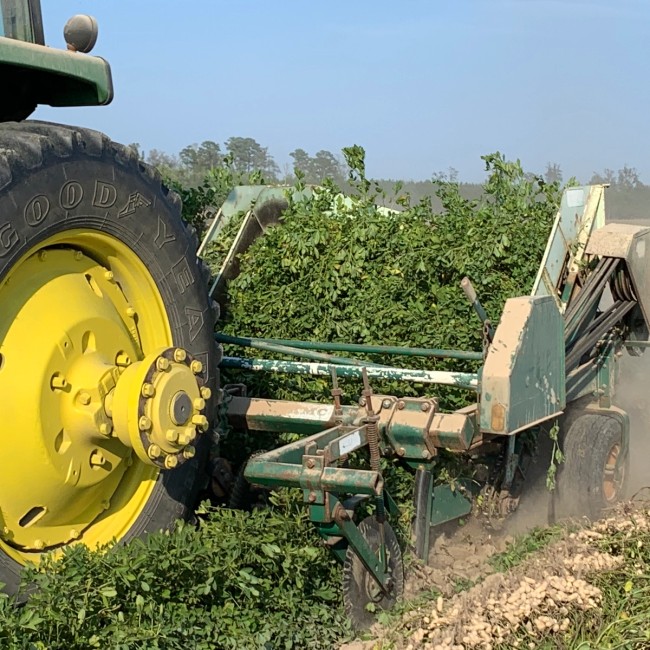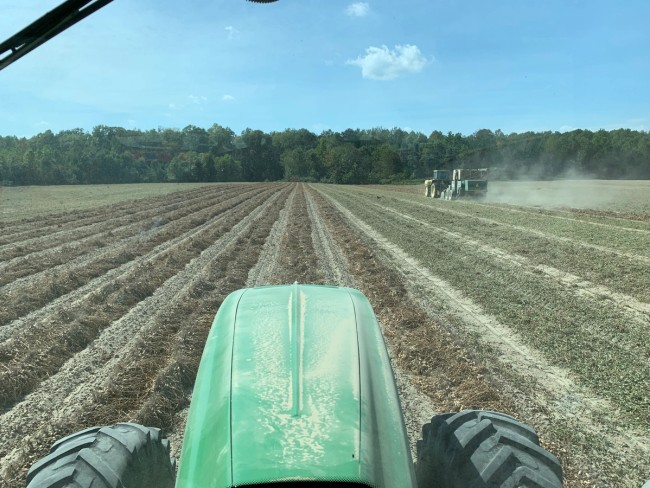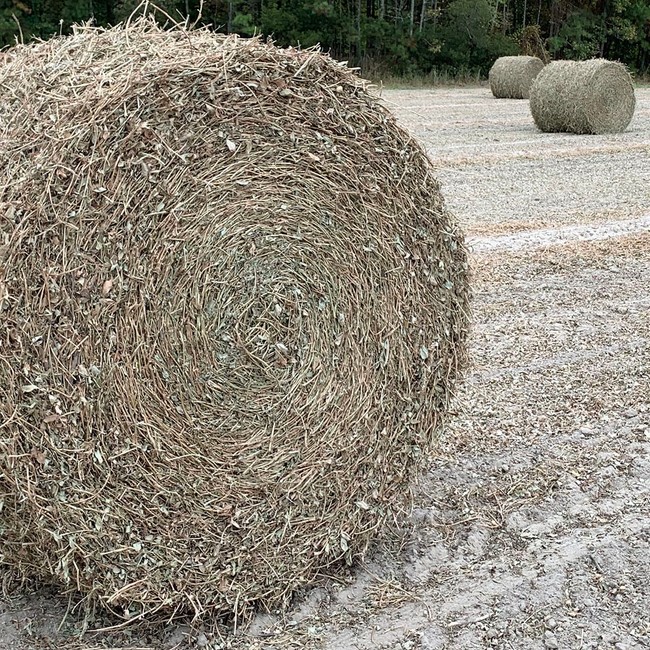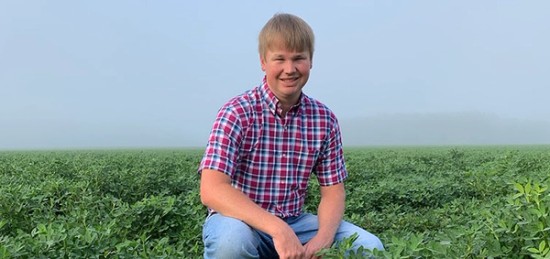When cracking open a peanut shell at the ballpark or spreading peanut butter on a sandwich, we all appreciate the great taste, nutrition and satisfaction that peanuts provide. We know that peanuts are a natural product that are grown over time and tended to by farmers, but have you ever thought about how peanuts make it from field to market?
West Drake, a fourteenth-generation peanut farmer from Newsoms, Virginia, took over the National Peanut Board’s Instagram account to show consumers what it takes to harvest peanuts. On his family’s 1,400-acre farm they grow 200 acres of peanuts. Harvest takes about two to three weeks from the time digging begins until they finish combining. Here’s what he shared about how it all gets done.
After planting, it takes about 140-150 days for peanuts to grow before they are ready to be harvested. The timing depends on factors from the variety of the peanut to the weather.
“We had a nice spring followed by timely rainfall throughout the summer until August 1st, and since then we have been abnormally dry,�” said Drake. “We had high daily temperatures throughout July, August and September, which helped push our crops to maturity much earlier than usual.”
Peanuts are checked for maturity to determine when to begin digging. When the peanut kernel develops its signature red “skin” and separates from the peanut hull (shell), then the peanuts are ready for harvesting.

Digging peanuts and inverting.
To begin harvest, farmers drive over each row with a peanut digger, which is equipped with a blade to cut the root off the bottom of the plant. Rotating spikes on the machine dig into the soil and invert the plants so that they are laid back in a row on top of the soil with the peanut pods facing sideways. The peanuts are left in the field for a few days to dry until their moisture content is about ten percent. Once the peanuts have dried, it’s time to collect them using a combine.

Combining peanuts.
The combine removes the peanuts from the vines and also helps to remove additional dirt from the peanuts. As the combine drives over the rows, it blows the peanuts into a large basket and spreads the peanut vines (also known as peanut hay) back onto the land. During this process, the whole family gets involved to make sure the peanuts get out of the field in a timely manner.

(L-R) West and Maci Drake
“My wife, Maci, is a dental hygienist, but enjoys helping out on the farm after work and on weekends,” said Drake. “We all work together as a family!”

Peanut hay being baled.
When complete, the peanuts are loaded into a semi-trailer and sent off to a buying point. Each trailer holds about 45,000 lbs. of peanuts. Drake finishes in the field by baling up the peanut hay and using it as feed for cattle, which adds to the peanut’s sustainability. No part of the peanut plant goes to waste!
In the end, the whitest hulled and most uniformed peanuts will go to use for in-shell peanuts, the kind you get at a ball game. The rest will be shelled and used in cocktail peanuts, candies, and peanut butter. Some farmers also grow peanuts that will be used as seed for the next year’s crop, so they can start the whole process over again.
You can view the story by following @NationalPeanutBoard on Instagram.
